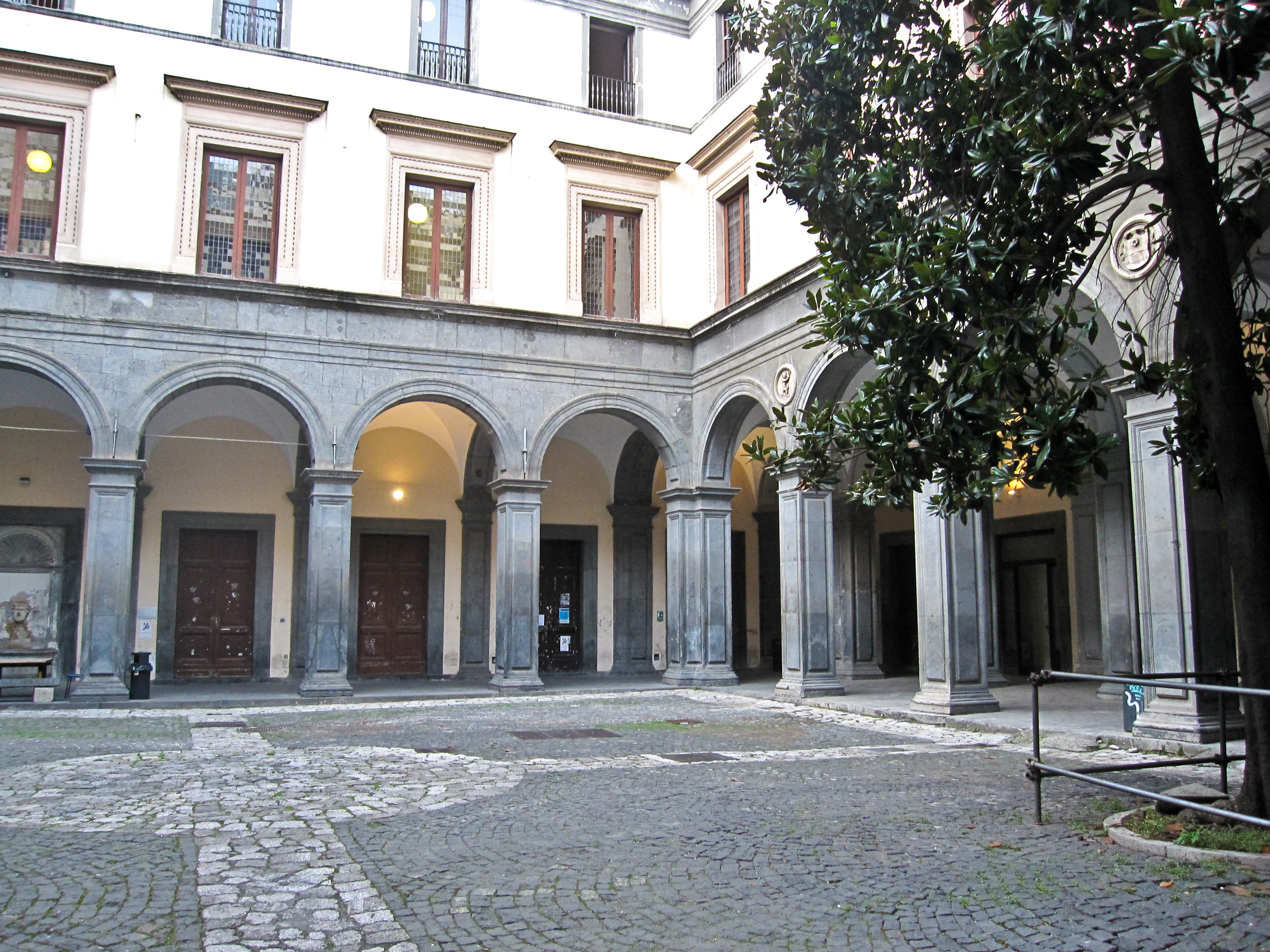Palazzo Orsini A Gravina on:
[Wikipedia]
[Google]
[Amazon]
The Palazzo Orsini di Gravina is a

 The original architect is not certain, although sources claim the architect was the little known
The original architect is not certain, although sources claim the architect was the little known Napoligrafia
entry on the palace.
Renaissance
The Renaissance ( , ) , from , with the same meanings. is a period in European history marking the transition from the Middle Ages to modernity and covering the 15th and 16th centuries, characterized by an effort to revive and surpass ideas ...
-style palace on number 3 Via Monteoliveto, in the San Lorenzo quarter of Rione San Giuseppe-Carità, of central Naples
Naples (; it, Napoli ; nap, Napule ), from grc, Νεάπολις, Neápolis, lit=new city. is the regional capital of Campania and the third-largest city of Italy, after Rome and Milan, with a population of 909,048 within the city's adminis ...
, Italy
Italy ( it, Italia ), officially the Italian Republic, ) or the Republic of Italy, is a country in Southern Europe. It is located in the middle of the Mediterranean Sea, and its territory largely coincides with the homonymous geographical re ...
. Since 1940, it has housed the Faculty of Architecture of the University of Naples. It is located across the street and a few doors north of the sleek and modern Palazzo delle Poste
A palace is a grand residence, especially a royal residence, or the home of a head of state or some other high-ranking dignitary, such as a bishop or archbishop. The word is derived from the Latin name palātium, for Palatine Hill in Rome which ...
(Post Office). Across the street at the north end of the palace, is the Piazza Monteoliveto with its Fountain and the church of Sant'Anna dei Lombardi.
History
The palace was commissioned by the nobleman Ferdinando Orsini, who acquired lands from the nearby Santa Chiara. The first two stories of the façade were built from 1513 to 1549. The palace has changed hands many times over the centuries, and with some interludes, was linked with the prominentOrsini family
The House of Orsini is an Italian noble family that was one of the most influential princely families in medieval Italy and Renaissance Rome. Members of the Orsini family include five popes: Stephen II (752-757), Paul I (757-767), Celestine II ...
till the 19th century. One of the members of the family became Pope Benedict XIII in 1724. From there it passed to private hands and to the Bourbon monarchy, and became government offices, till becoming part of the University.
Architecture

 The original architect is not certain, although sources claim the architect was the little known
The original architect is not certain, although sources claim the architect was the little known Gabriele d'Angelo
Gabriele Agnolo, also known as ''Gabriele d'Angelo'' (died 1510) was an Italian architect active in Naples in the early-Renaissance manner.
He was born in Naples, and followed in the style of the contemporaries, Novello da San Lucano and Giovan ...
. It is known that Giovanni Francesco di Palma worked on some of the external decorations during 1548 and 1549.
The main facade, on Via Monteoliveto, has a rusticated stone brick base for a first floor. The second floor has marble-framed windows surmounted by circular niches with busts. The tall windows rise on a marble cornice, and are separated by Piperno rock pilasters with mixed doric-corinthian capitals. The ensemble breaths an elegant sobriety akin to that of contemporary palaces in Rome, such as the Palazzo Vidoni Caffarelli
The Palazzo Vidoni-Caffarelli is a palace at the intersections of Via del Sudario, Piazza Vidoni, and Corso Vittorio Emanuele in the rione Sant’Eustachio in Rome.
History
The Renaissance palace, whose design, for many years was attributed to R ...
.
The entrance portal was designed and built by Mario Gioffredo
Mario Gaetano Gioffredo, also called the ''Neapolitan Vitruvius'' (14 May 1718 – 8 March 1785), was an Italian architect, engineer, and engraver.
Biography
He was born and died in Naples
Naples (; it, Napoli ; nap, Napule ), from grc, ...
in 1766. During this time, the interior was frescoed by Giuseppe Bonito, Francesco de Mura
Francesco de Mura (21 April 1696 – 19 August 1782) was an Italian painter of the late- Baroque period, active mainly in Naples and Turin. His late work reflects the style of neoclassicism.
Life
Francesco de Mura, also referred to as ''Fran ...
, and Fedele Fischetti
Fedele Fischetti (30 March 1732 – 25 January 1792) was an Italian painter of the Neoclassical period. He was born and died in Naples the capital of the Kingdom of Naples.
Biography
F. Fischetti was mainly active as a fresco painter for pa ...
. In addition, a fourth wing to close the central courtyard was completed. The palace underwent restorations after a fire during the revolution of 1848 severely damaged the palace; the architect was Gaetano Genovesi. A third floor with balconies was added in the 19th century; these were removed in the 20th century and the circular niches with busts restored.entry on the palace.
References
{{DEFAULTSORT:Orsini di Gravina, Naples Palaces in Naples Orsini family 1549 establishments in Italy Renaissance architecture in Naples Buildings and structures completed in 1549